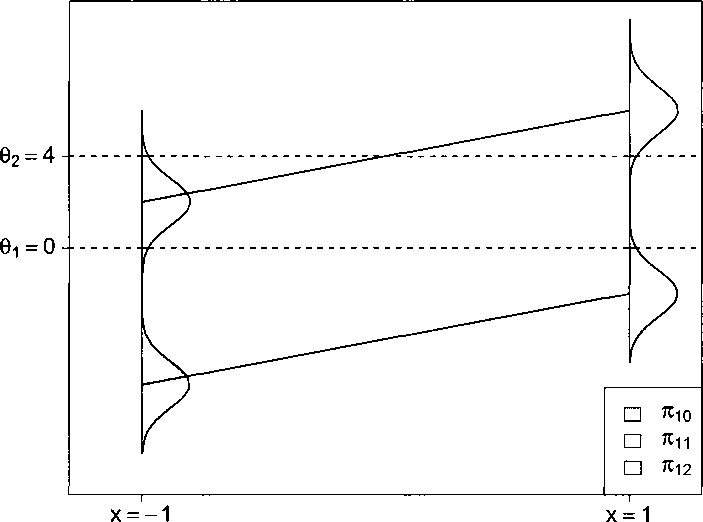22

Figure 2.2: Illustration of the distribution of the latent variable vil in the model
described in (2.2)-(2.4) when the covariate takes values —1 and 1. Here we consider:
J = I type of toxicity, no patient-specific random effect ri, G = 2 components in the
mixture of normals and three, K = 2, possible ordinal outcomes. In both mixtures,
the darkly shaded, lightly shaded and white areas correspond to the probabilities πι⅛
of the ordinal outcome taking the values 0, 1 and 2, respectively.
On the other, large values of G may overparameterize the model leading to poorly
mixing Markov chains. Alternatively, using reversible jump MCMC (Green, 1995),
G could be included in the parameter vector and estimated as part of the inference.
But since the parameters of interest are the cell probabilities πj⅛, and inference on
mixture-specific parameters is not of interest we prefer the approach with fixed large
values of G. Formally implied inference on the parameters of the mixture model,
including μjg and pjg, should not be interpreted. Problems related to label switching
(arbitrary permutation of the terms in the mixture) and node duplication (replicating
More intriguing information
1. The name is absent2. The name is absent
3. From music student to professional: the process of transition
4. Imputing Dairy Producers' Quota Discount Rate Using the Individual Export Milk Program in Quebec
5. Comparison of Optimal Control Solutions in a Labor Market Model
6. The name is absent
7. Studies on association of arbuscular mycorrhizal fungi with gluconacetobacter diazotrophicus and its effect on improvement of sorghum bicolor (L.)
8. The name is absent
9. Detecting Multiple Breaks in Financial Market Volatility Dynamics
10. American trade policy towards Sub Saharan Africa –- a meta analysis of AGOA